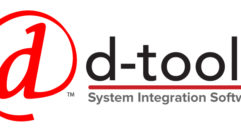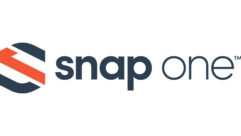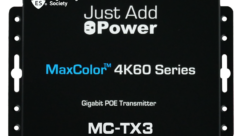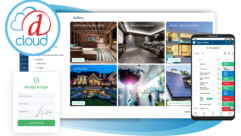
New Tools Add Snap to Corporate Events
Mar 7, 2007 8:28 PM,
By John McKeon

Staged events have always been a key part of corporate marketing and communications strategies, and audio/video tools continue to play a central and expanding role in these events. Today, the AV integrator may be challenged to identify AV tools that corporate clients can use to distinguish themselves and attract attention—without busting the budget.
Jeff Buhl, a producer in the Washington, D.C. office of Williams Gerard Productions, says every three or four years a new technology comes along that catches on dramatically in the corporate marketplace. Often, these new technologies come with price tags that restrict their adoption to the most well heeled clients.
“A new technology will usually break through at the high end,” he explains. “Then, as it becomes more popular and the prices come down, more people want to use it.”
As an example, Buhl cites multi-projector, edge-blended widescreen displays. In this increasingly popular strategy, several high-brightness projectors are arrayed side by side to project an image as much as 60ft. or 70ft. wide. The image appears seamless, thanks to powerful image processing either built into the projectors or provided by third party controllers.
“Widescreen, when it first broke in, was very expensive and not many people were able to do it,” he says. “Now we see it all over.”
Buhl points out a distinct advantage of these widescreen systems. “We’re doing less staging for corporate clients, and more often just putting up wide screens,” he says. The widescreen can be used like a videowall, he adds: “We can put one video over the entire screen, or divide it up.”
Creative management of the projected image can allow it to substitute for constructed sets, Buhl notes. Changes of scenery, meeting theme colors, and the like can be accomplished from a control console, without having to send technicians on stage to move scenic elements.
Another definite trend among corporate customers, Buhl says, is LED curtains. These lightweight, flexible arrays incorporate LED modules into a fine grid or fabric mesh that can be positioned in almost limitless ways. “It’s not just a lighting surface, but can be a projection surface, too,” Buhl says. LED curtains can create the opportunity for reveals, three-dimensional staging, and other striking effects.
What Buhl calls “malleable” LEDs are another popular new tool in staging. These flexible structures can be formed into curves and odd shapes, creating the opportunity to transcend the typical rectangular appearance of projected images.
One recent high-profile example comes from CPR Multimedia Solutions, based in Gaithersburg, Md. CPR provided its 360° Theater technology for the post-game program in which the NFL’s Vince Lombardi Trophy was presented to the Super Bowl victors, the Indianapolis Colts.
“With a small footprint, and the great color saturation and brightness of LEDs, 360° Theater is perfect for tradeshow booths, lobbies, galas, amusement parks, retail environments, and on stage,” the company says.
CPR Multimedia CEO Jeff Studley also points to mobile LEDs as an increasingly popular promotional tool for corporate users. These LED display panels are mounted on trucks or trailers and can be transported easily to tradeshows, outdoor gatherings, and other events.
Whatever the technology, the goal is the same: To add some new pizzazz to an environment that otherwise might begin to grow stale. Many of the new tools are attracting adherents in the corporate marketplace today because, as Buhl puts it, they appeal on the basis of “both economy and creativity.”









